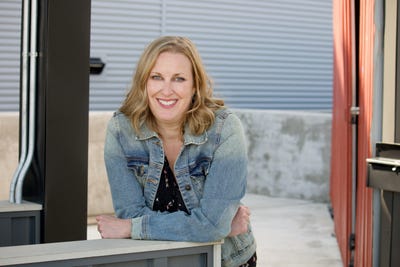The future of food as medicine: It’s a work in progressThe future of food as medicine: It’s a work in progress
An expert panel at FoodService Director’s recent Menu Directions conference delved into the past, future and current state of this topic in the onsite foodservice industry.

FSD Senior Editor Benita Gingerella moderated a panel focused on fine-tuning our definitions of food as medicine as an industry at the recent Menu Directions conference in Atlanta. The panel was made up of experts in different segments and areas of onsite foodservice: Lindsey Palmer, VP nutrition and industry relations for Chartwells K12; Chef Jeffrey Quasha, senior director of culinary innovation for Morrison Healthcare and Carolyn O’Neil, president of O’Neil Nutrition Communications.
What does it mean?
As for the question of “What does food as medicine mean to you?” Quasha drew on his extensive experience with that question in the world of healthcare dining, both on the patient and retail sides.
“It’s a question we constantly ask ourselves: Is food truly medicine if no one is eating it?” Quasha said. “That’s the approach we’re taking at Morrison Healthcare, that every patient matters.”
To reach each patient, healthcare dining professionals must realize that positive, life-saving changes to their diet just don’t happen overnight. “It takes 90 days to change a habit. We can give them a start, though," he said.
When communicating the message of food as medicine to school-age kids, “it looks different than any other setting,” Palmer said. “We want to make our education piece relatable. We do education in the cafeteria. The main thing with young participants is talking about and identifying fruits and vegetables. We only have a few minutes, so we try not to give too much information, but give them foods that can help them manage their moods and their bodies.”
Palmer referenced Inside Out, a Pixar movie that dealt with feelings. “How do we talk to them about emotions? We use our Mood Boost program, and through this program, we’re looking at students who don’t know what we know as adults, so we’re meeting them where they are and making it fun and relatable, not heavy concepts.”
Also on the K-12 side, Palmer said there’s been a move to be more inclusive. For example, what used to be called “sports nutrition” is now being refererred to as “performance nutrition, because not everyone is playing sports. Research has shown that Gen Z is the loneliest generation; we are not mental health providers, but what we can do, though, is talk about foods they’re seeing, new experiences and identify them with how they make you feel.”
O’Neil brought up her work with Delta Airlines, in particular a wellness entrée that featured a quinoa salad with chicken, roasted carrots and a squeeze of lemon. She also pointed out that many thought leaders in wellness have questioned “Should we really call it ‘food as medicine?’ Food is food and medicine is medicine,” she said. “But when people are ill, if they’ve been diagnosed with heart disease or cancer, they do need food as part of their treatment to get better. And to me, food as medicine means having the opportunity to access healthy foods. You don’t have to reinvent the wheel. Kaiser Permanente has a great website for healthy recipes.”
Where are we now?
“Nutrition is not a list of things you should not eat,” O’Neil said. “It’s about being healthy and happy.” O’Neil’s website, The Happy Healthy Kitchen makes that connection, with a dash of beauty. “In Rome, I was checking into a hotel and there was a bowl of oranges instead of flowers. And it was the most beautiful thing I’ve ever seen. If we can change the perception and make that bowl of oranges as beautiful to people as a plate of brownies …”
In terms of patient dining, “we’re still dealing with the perception of what a hospital menu had been,” Quasha said. “For years, it was a prescription with the minimum to help a patient survive. Part of changing the perception of food as medicine starts with changing the perception of what food in a hospital truly is.”
Quasha, a self-described “geek for data,” led him to discover that 75% of patients were on five special diets, such as a renal diet, and the average patient stays for 2.5 days. He then looked at how patient meals fit into that equation.
“When you’re lying in a hospital bed, you have three opportunities to look forward to—of course, getting discharged, but not drawing blood—the biggest opportunities are thinking about what you’re going to eat,” Quasha said. “Old-school hospital food was: A tray comes into the room, they lift the lid and the food looks gross.”
Now, Quasha said, “A tray comes in and it’s on China, and it looks like hotel room service. There’s panko-crusted cod with a citrus risotto. A patient will be inspired to go home and seek out those foods—they maybe haven’t tried celeriac or quinoa.”
The realities of low-salt diets mean getting more creative with seasoning to make food taste delicious, Quasha has found, and salt-free seasoning blends with more umami are making a difference.
The difference is also in how the healthier meals are presented. “We’re changing the perceptions. If it’s a grain bowl with vegetables garnished with three ounces of protein, we’re not telling people you’re eating two cups of food with under 450 calories. We’re telling them they’re eating an amazing bowl that’s healthy and delicious.”
Putting a personality with the food has been a game-changer for K-12, Palmer said. “Kids get excited when any adult they haven’t seen recently comes into the school,” she said. “They want to show them everything new, including putting orange wedges in their mouth—they love to show that. They have a lot of energy. We bring in one of our registered dietitians or an excutive chef. We like them to meet someone new. Kids are really chatty when they meet someone new. We want to make it fun and engaging.”
How is food as medicine evolving?
“I’ve come to the reality that evolving in the K-12 space is going to have to revolve around their phones,” Palmer said. “We have to figure out a way to get the good information out into the public and squash the misinformation about school food.”
Quasha said he sees the evolution as continuing to build on the work that’s being done now across the segments.
“I think it’s a combination of everything we’ve talked about in this panel,” he said. “It’s teaching kitchens, what’s happening in your spaces in your business; medically tailored meals are not Lean Cuisines or any frozen meal. If you’ve had a particular surgery or procedure, you need specific foods, but we also want to inspire habit change. The only way to inspire that is through deliciousness. People are very informed and they know what great food looks like. If it doesn’t look and taste delicious, then it’s a fail. If you only have 2.5 days to change a habit, the food has to be delicious.”
O’Neil reiterated the universality of food as it relates to our well-being. “It’s math, it’s science, it’s history, it’s culture,” she said. “All of those things can turn any cafeteria into a classroom.”
About the Author
You May Also Like




.jpg?width=300&auto=webp&quality=80&disable=upscale)

